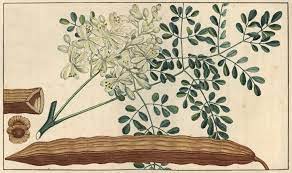Moringa, often hailed as the "Miracle Tree," has a rich tapestry of history and cultural significance that spans thousands of years and numerous civilizations. This resilient and versatile plant, scientifically known as Moringa Oleifera, has been a source of nutrition, medicine, and wonder across the globe. Its journey from the foothills of the Himalayas to the shelves of modern health food stores is a fascinating story of discovery, reverence, and global exchange. This article delves into the historical roots and cultural impact of Moringa, shedding light on its enduring legacy and the reasons behind its celebrated status in today’s wellness culture.
Historical Roots
Ancient Beginnings
- Subcontinental Origins: Moringa is believed to have originated in the northwestern region of India, with references dating back to around 2000 BCE in ancient texts, highlighting its medicinal and nutritional uses.
- Egyptian Elixir: By the early 19th century BCE, Moringa had made its way to Egypt, where it was prized for its oil, used in perfumes and to protect the skin from the harsh desert climate.
Global Journey
- Spread Across Continents: The Romans, Greeks, and Egyptians introduced Moringa to the wider world, valuing it for its therapeutic properties and using it to treat a variety of ailments.
Cultural Significance
Symbol of Prosperity and Protection
- Ancient Rituals: In various cultures, Moringa was considered a symbol of prosperity and protection. It was planted near homes to ward off evil spirits and used in religious ceremonies to bless participants.
Nutritional Staple in Traditional Diets
- Sustenance and Survival: In many parts of Africa and Asia, Moringa has been a vital source of nutrition, especially in regions prone to drought and famine, thanks to its ability to grow in harsh conditions.
Medicinal Uses Through the Ages
Traditional Medicine
- Ayurvedic Healing: In Ayurveda, Moringa has been used to treat over 300 conditions, from diabetes and heart disease to inflammation and infectious diseases.
- Natural Remedy Across Cultures: Beyond Ayurveda, Moringa’s leaves, bark, flowers, and roots have been used in traditional medicine systems across Africa, Asia, and the Americas.
Moringa in Modern Times
Superfood Status
- Global Health Movement: With the rise of the health and wellness movement, Moringa has gained international fame as a superfood, celebrated for its dense nutritional profile and antioxidant properties.
Sustainable Development
- Fighting Malnutrition: Organizations worldwide have recognized Moringa’s potential in combating malnutrition and promoting sustainable agricultural practices in developing countries.
Conclusion
The history and cultural significance of Moringa are as rich and varied as the nutrients that pack its leaves. From its ancient origins to its modern-day status as a superfood, Moringa has woven its way through centuries, offering health, hope, and sustenance to countless generations. Its story is a testament to the power of nature and the enduring human quest for natural remedies and wellness. As we continue to explore and appreciate the wonders of Moringa, we not only honor its past but also ensure its place in the future of global health and nutrition.

